
A SHORT HISTORY OF ADDISCOMBE
Addiscombe was originally one of the seven boroughs of Croydon. A theory as to the origins of its name is that it referred to an area located on the edge of the ‘Coombe’ (ie valley), supported by the fact that it was referred to in the 17th century as ‘Edgecombe’.
THE ADDISCOMBE ESTATE
There is evidence that a mansion existed on the Addiscombe Estate at least as early as the 15th century.
In the 16th century the Estate was owned by the Heron family, from which we have the name ‘Heron’s Croft’ referring to the Grade II listed building to the immediate south east corner of the conservation area. In 1516 Thomas Heron rebuilt the old the mansion on a much grander scale.
The estate passed through several owners until 1650 when it was sold to Sir Purbeck Temple, a member of the Privy Council in the time of Charles II.
After the death of Sir Purbeck Temple in 1695 and his wife Dame Sarah Temple in 1700, the estate passed to Dame Sarah’s nephew, William Draper, who was married to the daughter of the famous diarist, John Evelyn.

William Draper demolished the old mansion in 1702 and built a new residence in an English Baroque style, to a design attributed to Sir John Vanbrugh, architect of Blenheim Palace and Castle Howard. This mansion stood on the area that is now Havelock Road and Outram Road.
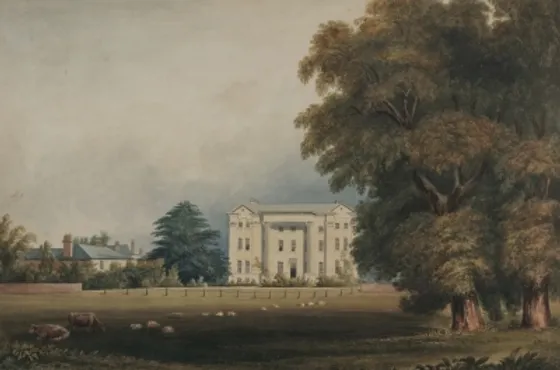
When William Draper died in 1718, he left his estate to his son of the same name. It was then passed to his nephew, Charles Clark who lived there until 1778.
In 1808, its then owner, Henry Delme Radcliff, sold the estate to the East India Company for £15,500.
THE EAST INDIA COMPANY MILITARY ACADEMY
The East India Company was established as a trading company by Royal Charter in 1600. It has been described as the largest multinational business in history. At its peak,the Company controlled half the world’s trade and a quarter of its population. It ran its own army and navy, minted its own currency and traded across the world. The East India Company ran a military academy at Addiscombe House between 1809 and 1858.
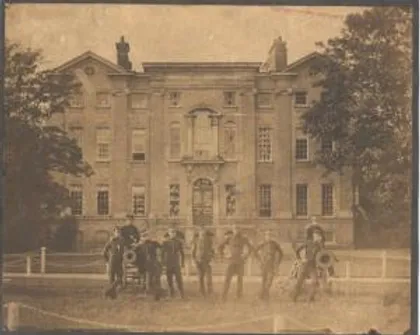
The first of the East India Cadets were in residence at Addiscombe by 1809. Initially everyone was crowded into the mansion, but work soon started on the erection of barrack blocks, classrooms, hospital, laundry, bakehouse, brewhouse and other necessary buildings. All of these were completed by 1828 at an accumulated cost of £21,397.
About two thirds of the grounds were used as a farm,with a large area to the southof the college buildings laid out as woodland known as ‘The Wilderness’, including elm,lime, oak, walnut, ash, beech, chestnut, fir, hornbeam and sycamore trees.
The remaining 30 acres of land formed the grounds of the college, including a parade ground surrounded by the flagstaff bastion and ditches. Another area of land to the north, now contained by Grant Road and Inglis Road, was also formerly part of the estate, and was initially two meadows leasedfrom a neighbouring farmer. This was the site of the ‘coldstream’,which the college cadets usedfor swimming.The last building at the College was erected in 1851- the large gymnasium which still stands today in Havelock Road, now converted into flats.The other remaining buildings that still exist from the days of the East India Company are the semi-detached houses, labelled on a plan of the College as the ‘Professors' Houses'.
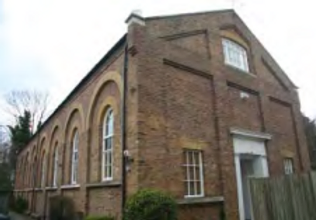
THE CADETS
Cadets at Addiscombe College, aged between 14 and 18, were given a wide education, with a focus on science and engineering, including practical work. Over the fifty-two years of its existence, the college educated about 3600 cadets who were later commissioned for service in India.Following the Indian Mutiny (first War of Independence) of 1857, the British Government took control of India from The East India Company and appointed Lord Stanley as the Secretary of State for India.In 1861 the Royal and Indian services were amalgamated and the military academy at Addiscombe was closed, being of no further use. The remaining cadets transferred to the Royal Military Academy at Sandhurst.
ASHBURTON ESTATE
The land now bounded by Ashburton Road, Lower Addiscombe Road, Addsicombe Road and Shirley Road once comprised the Ashburton Estate. The Estate is labelled as "Addiscombe Farm" on the 19th maps.
The flint-faced Addiscombe Farmhouse, which still survives today was built in 1676.
Ashburton House, located where Northampton Road now meets Addiscombe Road, was a grand Georgian house built in the late 18th century by the Whig politician John Dunning.
The Ashburton Estate acquired its name when Alexander Baring, who inherited the estate from Elizabeth Baring,the wife of John Dunning, took over the barony of Ashburton in Devon. Lord Ashburton married Anne Louise Bingham, hence the naming of the nearby Bingham Road.
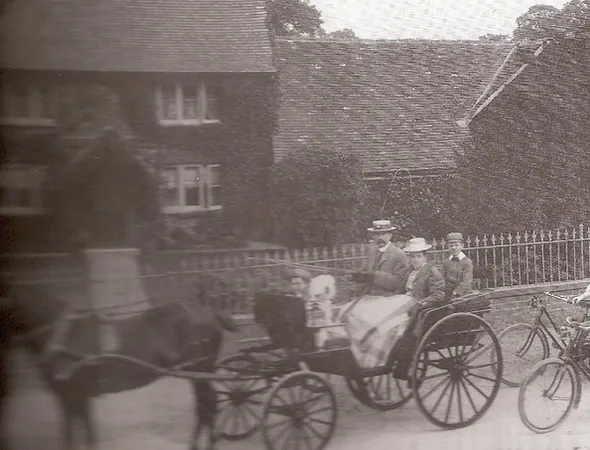
THE DEVELOPMENT OF THE EAST INDIA ESTATE
In 1861 the buildings and 88 acres of land that formed the East India Company Estate were sold at auction to the British Land Company for a total sale value of £33,600.
The British Land Company initially acted as freehold, as individuals and developers began to lease and build incrementally on parcels of land.
The roads were named after military individuals with a prominent role in the 1857 Indian Mutiny (first War of Independence). For example, Sir Henry Havelock and Sir James Outram were commanders in the British army and Sir Charles Canning was Commander-General of India.
Much development on the newly created building plots on the former East India College estate occurred in the decades after 1862.
From the outset there was a demand for large size and high quality villas from middle class families.
The new houses were sought after for their proximity to Croydon’s Town Centre, which was enjoying growing prosperity in the late nineteenth century. The area was also promoted for its convenient access to central London by train from nearby East Croydon station and later from the newly opened Addiscombe Station. It was highly practical for the first generation of middle class commuters.
In 1862 Elgin Road was the first new road to be laid out into building plots for sale by auction.
It was stipulated in the sale agreement that no land should be used for any manufacturing purposes and there was a minimum value of between £300 and £400 for each house, which ensured quality of construction.
Shortly after, in excess of 118 lots were put up for auction on the new Canning and Clyde Roads.
Meanwhile demolition work began at the college, with the chapel, barracks and domestic buildings demolished first.
Between June 1862 and August 1863 there were many auctions of reusable materials from the demolition work, including over one million stock bricks, Portland and York stone, doors, window frames, floor boards and timbers.
It is possible that some of these materials were used in the construction of the new villas that were springing up in the area.
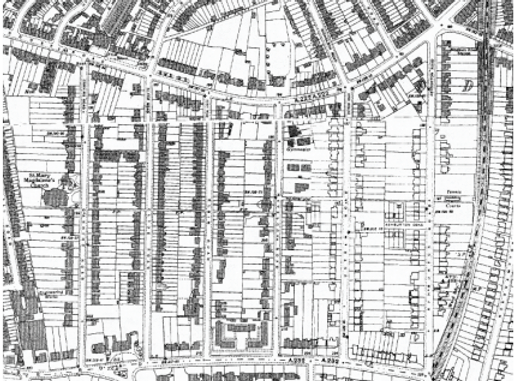
Addiscombe House, the new Havelock and Outram Roads and the western side of Ashburton Road were put up for auction on 25 May 1863.
From the 1890s the Ashburton Estate was gradually sold off for residential building plots.
Ashburton Road already existed as a lane on the boundary between the Addiscombe and Ashburton Estates. Ashburton House was demolished in c.1911
Several places of worship were also constructed in the area in the late 1860s including the temporary Church of St Mary Magdalene, built at the southern end of Elgin Road. Known as the tin hut as it was constructed from galvanised iron.
Despite piecemeal changes over the past century, the East India Estate area retains a unique character lent to it by its history and the formal estate layout of the 1860s with its villa-lined roads.
The series of 6 straight, parallel roads provide a clear structure and grain. The survival of a fair proportion of original, individual plots and original buildings from the 19th century lends a particular character and many of these buildings are locally listed.
Former residents of the East India Estate include Frederick George Creed (1871-1957), electrical engineer and inventor of the Teleprinter who lived at 20 Outram Road and is commemorated by an English Heritage Blue Plaque.